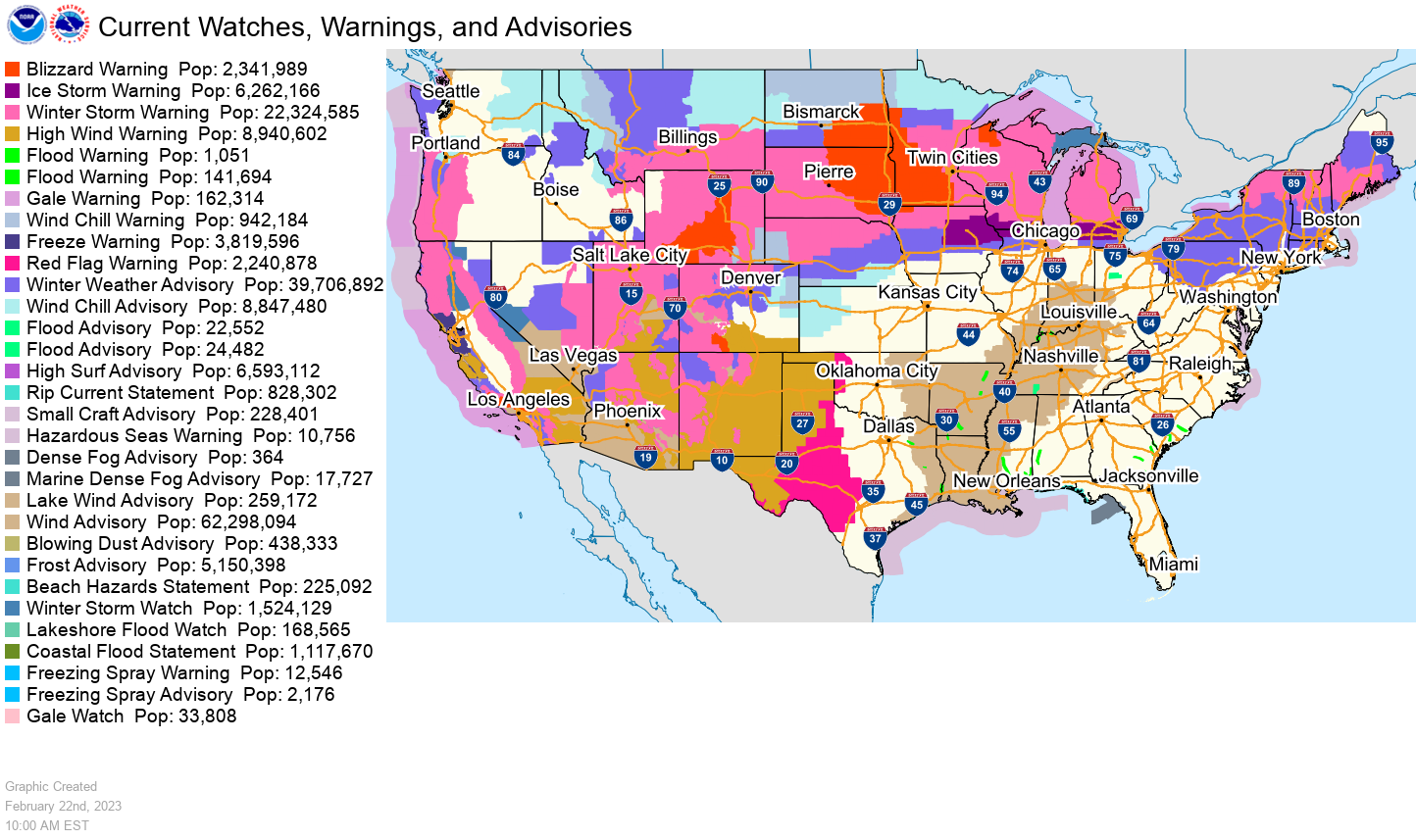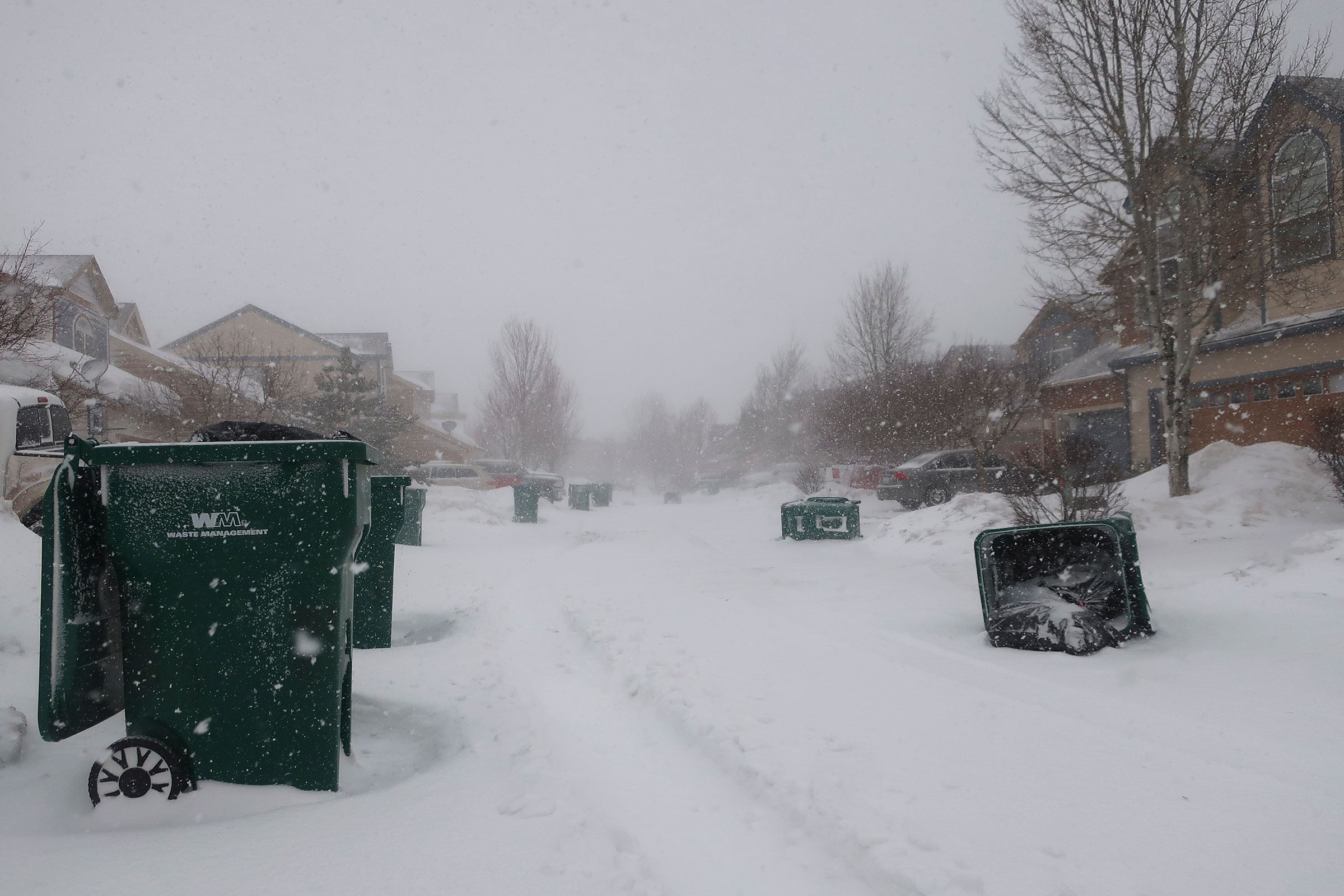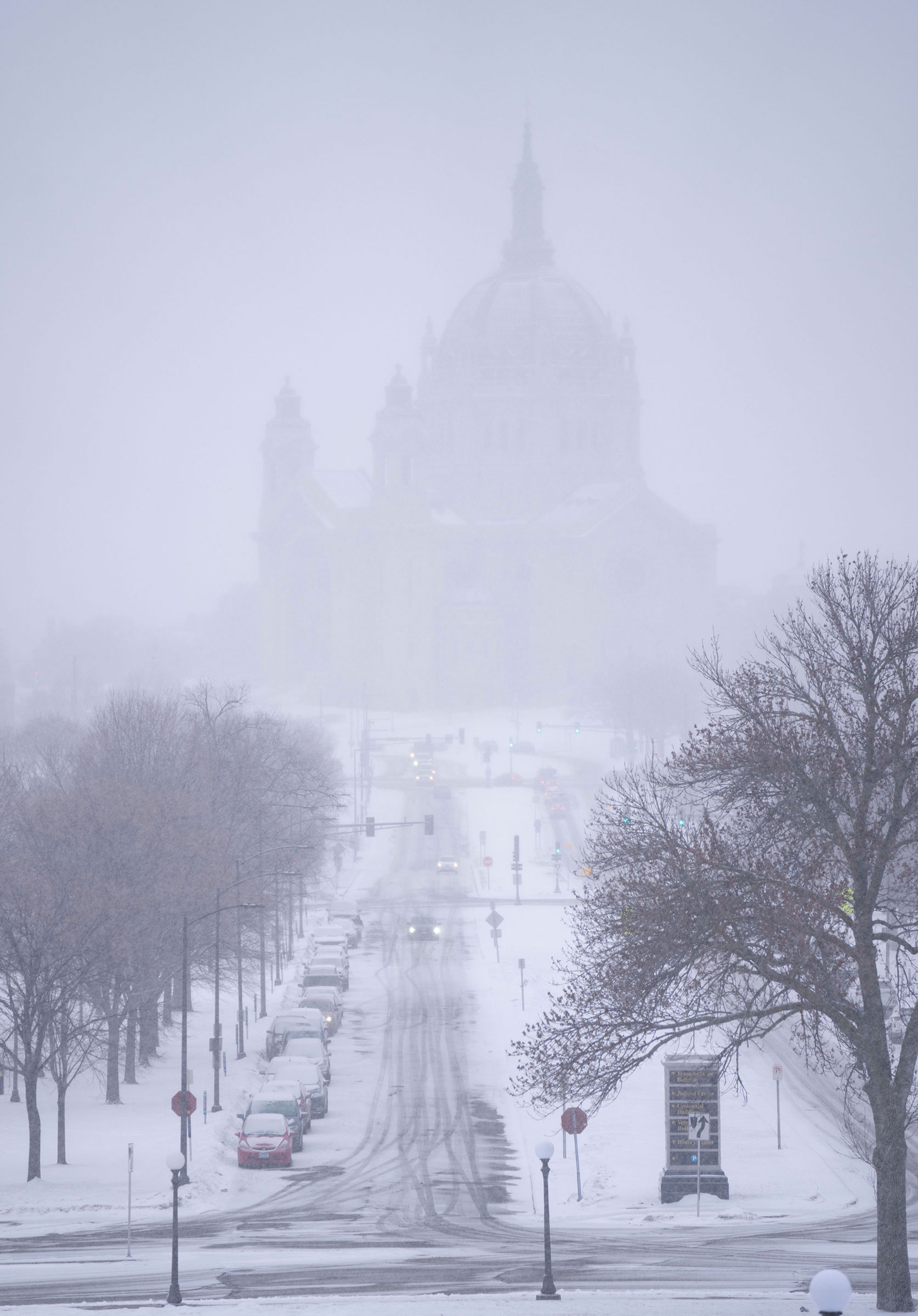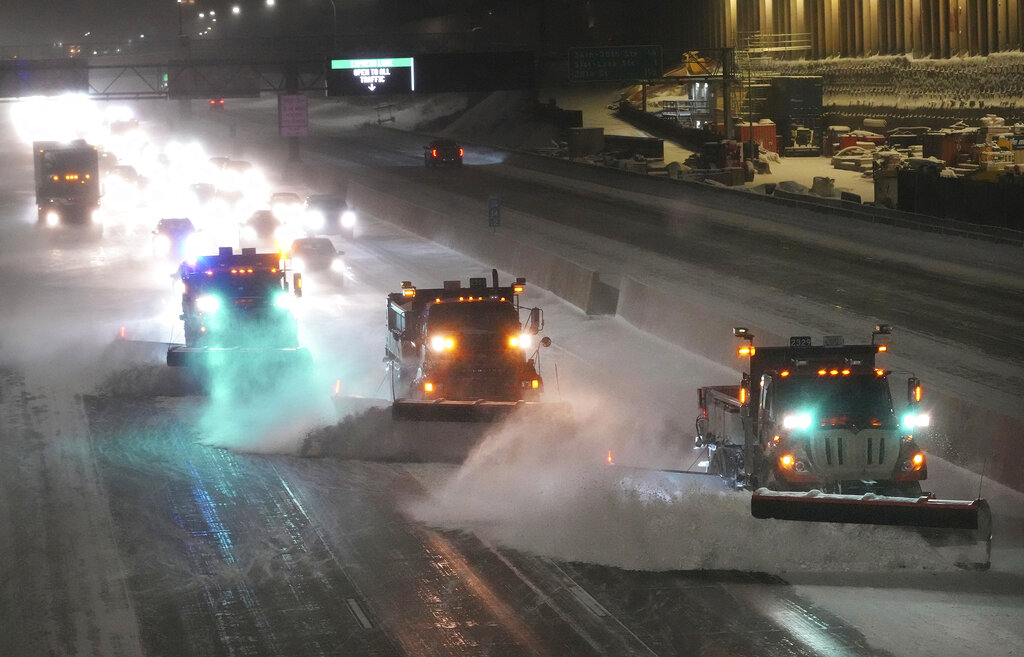Some 20 million Americans are confronting a massive winter storm that is bringing significant snow, sleet, freezing rain, and wind across the northern U.S. from California to Maine through Friday.
More than 1,000 flights in the U.S. have been canceled and another 1,400 delayed nationwide. Nearly half of flights from Minneapolis-St. Paul International Airport have been canceled, according to flight-tracking website FlightAware, as the area prepares for the possibility of record-breaking levels of snow with an additional 10-15 inches expected by Thursday morning. More than 40% of flights from Rapid City, S.D., have been canceled, with another 16% delayed. Denver, Detroit, and Milwaukee airports are also reporting dozens of cancellations.
Airlines began offering travel waivers even before the storm hit.
Winter weather alerts were sent across 22 states yesterday morning, with snowfall accumulating in areas including the northern Rockies, Montana, Wyoming and the Dakotas.
Here’s what to know about the winter storm’s trajectory and how it will affect you.

What’s the path of the storm?
The storm began its path along the Pacific Northwest and parts of the Rockies. More than 13 million people were under a winter storm watch with up to two feet of snow expected in the mountains.
Snow has already reached the Twin Cities, and the region is expected to be impacted for three days. By Wednesday’s morning commute, three to five inches of snow had already fallen. A second round of snow will hit around midday Wednesday and last through Thursday. Gusts of wind will be around 35-45 mph, making travel difficult.
Western cities including Salt Lake City are also feeling the storm. A band of heavy snow impacted the Wasatch Front, a region in the north-central part of Utah, Tuesday afternoon though it will gradually diminish by Wednesday evening, the National Weather Service reports.

The storm is expected to reach Chicago around midday Wednesday, where possible freezing rain and thunderstorms are expected. Power outages may occur as a result, according to AccuWeather meteorologist Dan Pydynowski.
Snow will reach the eastern U.S. by late Wednesday, mostly impacting central New England and some portions of upstate New York. Accuweather reports that northern areas of Vermont, New Hampshire and Maine will experience the most snowfall. Anywhere from a foot to 18 inches of snow is expected.
The bulk of snow and ice, however, is going to miss New York City. “There could be some rain for a time on Thursday,” Pydynowski tells TIME, “But in terms of any kind of winter precipitation from this storm, we’re most likely going to miss out on that and that’s most likely going to occur probably to our probably to our north.”
More from TIME
How will travel be impacted?
A flurry of cancellations and delays are in effect on Wednesday, with serious snowfall and winter weather impacting cities like Minneapolis for several days.
Blizzard alerts were in effect in Montana, amid warnings of dangerous avalanche conditions in Bridger Range. While the threat of hazardous weather has diminished, the National Weather Service of Glasgow, Mont. warns that the state is under a wind chill advisory until 1 p.m. Thursday. Current snowfall in the state ranges from four to 12 inches.
Highway 191 in Montana is closed, and the state is still asking people to avoid travel if possible. “Weather conditions are expected to get dangerous over the next couple of days,” said the Minnesota State Patrol. “Our troopers are ready to respond. Help them out by staying home.”
High winds have posed a risk in Wisconsin, as the state’s Department of Transportation warned of truck and RV rollover risk. Roads are covered with snow and ice across almost all the state this morning, and the department is asking people to drive slowly, reduce speed, and allow for extra following distance during the current storm.

Airports from Seattle to New York City are reporting significant delays and flight cancellations, with the highest number of cancellations in Minneapolis, Denver, and Detroit. Minneapolis-St. Paul airport alone had 191 flights canceled by Wednesday morning.
Major airports across the Great Lakes will also be impacted, including Chicago’s O’Hare International Airport and Milwaukee’s General Mitchell International Airport—which has already canceled about a third of all flights— and Detroit’s Metro Airport.
In terms of airfare, Delta is offering travel waivers across Minnesota airports. Customers who rebook travel on or before Feb. 27 will get their fare difference waived. If they cannot reschedule within these dates, customers can cancel their reservation and use their reimbursement towards a new ticket. Travel should be completed within one year from the date of original issue.
Southwest’s waiver is effective from Feb. 20-22 for people flying to or from Bozeman/Yellowstone, Mont., Colorado Springs, Colo., Denver, Colo., Minneapolis, Minn., Salt Lake City, Utah and others. Travelers can rebook their flight within 2 weeks of the original travel date for free.
United Airlines is offering two winter waivers. The first is for flyers who were hoping to travel from Feb. 21-22 in the midwest area. Change fees and price differences for rebooked flights will be waived for flights that depart on or before Feb. 26. Travelers who had tips planned from Feb. 22-23 are also eligible for a waiver. Their airport list is far more extensive, including Buffalo, N.Y., Madison, Wis., Cleveland, Ohio and more.

American is also offering waivers for travelers who expected to fly through Thursday. They have until Feb. 23 to make changes and can have change fees waived if they pick a travel option on or before Feb. 27.
Boston’s Logan Airport could be affected due to ice and snow from Wednesday night through early Thursday, but that will likely be minimal, Pydynowski tells TIME. In the Big Apple however, where the mild temperatures marked the second warmest January on record, Pyndnowski says disruptions will only be caused by flight delays from other airports, as the region is unlikely to receive any serious winter weather.
More Must-Reads from TIME
- Cybersecurity Experts Are Sounding the Alarm on DOGE
- Meet the 2025 Women of the Year
- The Harsh Truth About Disability Inclusion
- Why Do More Young Adults Have Cancer?
- Colman Domingo Leads With Radical Love
- How to Get Better at Doing Things Alone
- Michelle Zauner Stares Down the Darkness
Contact us at letters@time.com